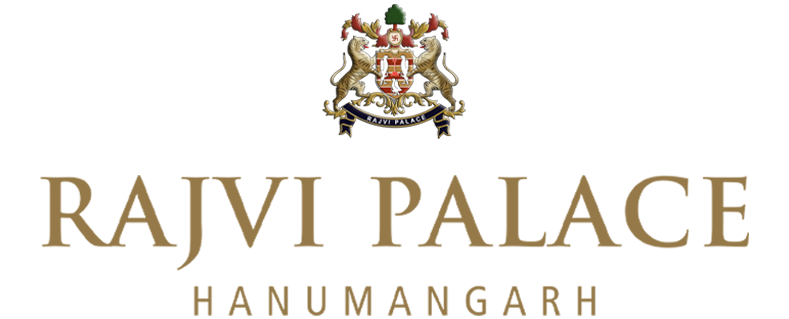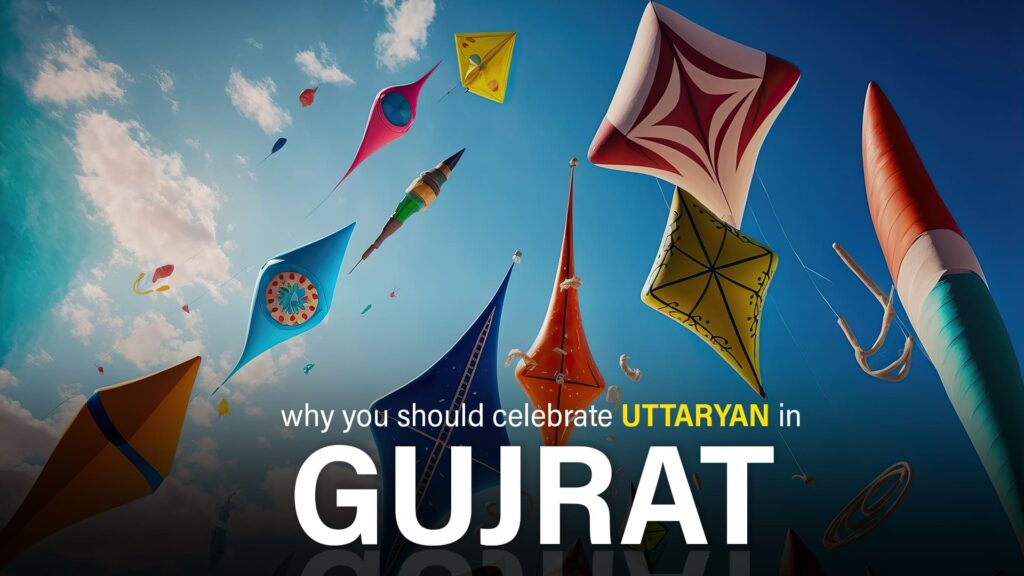Uttarayan is a vibrant and culturally significant festival celebrated in Gujarat with unparalleled enthusiasm. It marks the sun’s transition into the zodiac sign of Makara (Capricorn), symbolizing the end of winter and the onset of longer days. The festival falls on January 14th every year, marking a crucial point in the Hindu solar calendar. Uttarayan is renowned for its unique celebration, featuring kite flying, cultural events, and a rich tapestry of traditions that encapsulate the spirit of Gujarat.
In conjunction with Uttarayan, Gujarat hosts the spectacular Rann Utsav, a grand celebration that unfolds against the surreal backdrop of the Great Rann of Kutch. Rann Utsav is an annual cultural extravaganza showcasing the region’s diverse heritage, artistic prowess, and traditional craftsmanship. The festival typically spans several months, offering visitors a mesmerizing experience of the white desert’s natural beauty and the vibrant cultural landscape of Gujarat.
The juxtaposition of Uttarayan and Rann Utsav creates a unique cultural tapestry in Gujarat. While Uttarayan is rooted in age-old traditions and is celebrated with enthusiasm across the state, Rann Utsav adds a touch of elegance and grandeur with its artistic performances, folk music, and the picturesque setting of the Rann. The synergy between these two festivals attracts locals and captivates tourists from around the world, providing a kaleidoscopic experience of Gujarat’s rich cultural heritage.
Table of Contents
The Roots of Uttarayan
The roots of Uttarayan can be traced back to ancient times, rooted in the agricultural traditions of India. It marks the beginning of the harvest season when farmers celebrate the culmination of their hard work and the abundance of crops. The festival holds deep agricultural significance, signifying the transition from the harvesting of the Rabi crops.
Uttarayan is intricately linked to Hindu mythology, with references in various ancient texts. According to Hindu scriptures, Uttarayan is believed to be when Deities awaken from a six-month-long slumber and bestow their blessings upon the Earth. The festival is also associated with worshiping the Sun God, symbolizing the victory of light over darkness.
Over the years, Uttarayan has evolved from a primarily agricultural celebration to a multifaceted cultural extravaganza. The tradition of kite flying, particularly, has gained prominence and become synonymous with the festival. As communities come together to engage in friendly kite battles, Uttarayan has transformed into a social event that fosters camaraderie and unity among people of all ages.
Kite Flying Tradition
Kite flying during Uttarayan in Gujarat is more than a recreational activity; it carries profound symbolism. The soaring kites against the azure sky represent the spirit’s ascension, breaking free from earthly bonds. This act is often seen as a metaphor for human aspirations, reaching new heights, and overcoming challenges. The vibrant and colorful kites symbolize the festive atmosphere, spreading joy and positivity among participants.
Preparation and Enthusiasm Leading up to Uttarayan
The enthusiasm leading up to Makar Sankranti in Gujarat is palpable across Gujarat as enthusiasts of all ages engage in meticulous preparations for the kite-flying extravaganza. Weeks before the festival, markets bustle with activity, showcasing an array of colorful kites, strings (manja), and accessories. Families and friends gather to select the perfect kites, often opting for uniquely designed and intricately crafted creations.
The preparation of the manja is a traditional art in itself. The glass-coated thread is meticulously crafted to be sharp and sturdy, enhancing the thrill of the kite battles that ensue during the festival. Kite-flying enthusiasts take pride in perfecting their skills, ensuring their kites soar high, and engaging in friendly competitions with neighbors and friends.
The excitement is not limited to daylight hours. As the sun sets, the sky is adorned with illuminated kites, creating a breathtaking spectacle. The night sky comes alive with the glow of the kites and the spirited shouts of participants, adding another dimension to the Uttarayan festivities.
Social and Communal Aspects of Kite Flying
Uttarayan or Makar Sankranti in Gujarat is a festival that unites communities and fosters social bonds. Kite flying transcends age, gender, and social barriers, bringing people together on terraces, open grounds, and rooftops. Families, friends, and neighbors join in the revelry, creating a sense of camaraderie that defines the festival.
The communal aspect of kite flying is evident in the ensuing kite battles. Participants skillfully maneuver their kites to cut opponents’ strings, and the victorious shouts and cheers echo through the air. These friendly competitions showcase the participants’ expertise and strengthen social connections as people come together to celebrate the joyous occasion.
Uttarayan becomes a melting pot of cultures as people from diverse backgrounds share the sky, exchange greetings, and revel in the collective joy of kite flying. The infectious enthusiasm of participants creates an atmosphere of celebration and unity, making Uttarayan not just a festival of kites but a celebration of community and togetherness.
Rann Utsav: Celebrating the White Desert
Located against the amazing backdrop of the Great Rann of Kutch, the Rann Utsav is an annual extravaganza that elevates the cultural vibrancy of Gujarat to new heights. The festival, synonymous with grandeur and artistry, unfolds in the white expanse of the desert, attracting tourists and revelers from far and wide. Commencing typically in winter, Rann Utsav transforms the barren landscape into a lively carnival, showcasing the rich tapestry of Gujarat’s cultural heritage.
The White Desert, an expansive salt marsh in the Rann of Kutch, is the pristine canvas for the Rann Utsav. The stark, white landscape symbolizes purity and offers a surreal setting for the celebration. The festival not only celebrates Gujarat’s artistic and cultural heritage but also pays homage to the resilience of life in one of the most challenging terrains. This celebration amid the vast, white expanse reflects the triumph of vibrancy over desolation.
Unique Experiences Offered during Rann Utsav
-
Art and Craft
Rann Utsav is a treasure trove of traditional arts and crafts. Local artisans and craftsmen display their skills, allowing visitors to witness and purchase intricate handcrafted items, including textiles, jewelry, and traditional artifacts.
-
Folk Performances
The desert comes alive with the sounds of traditional folk music and dance performances. Colorful costumes, rhythmic beats, and lively performances by local artists showcase the diverse cultural heritage of Gujarat.
-
Tent City Accommodations
To enhance the overall experience, Rann Utsav set up a Tent City, offering visitors a chance to stay in luxury tents equipped with modern amenities. This unique accommodation allows guests to immerse themselves in the cultural festivities while enjoying the comfort of well-appointed tents.
-
Culinary Delights
The festival presents a gastronomic journey through the flavors of Gujarat. Traditional Gujarati cuisine, known for its diverse and delectable vegetarian dishes, takes center stage. Visitors can savor the culinary richness of the region amidst the enchanting surroundings of the Rann.
-
Adventure and Excursions
Rann Utsav provides adventure enthusiasts with opportunities to explore the nearby attractions, including wildlife sanctuaries, historical sites, and the captivating landscape of the Rann itself. Camel safaris and excursions to nearby villages allow visitors to witness the authentic rural life of Gujarat.
The Rann Utsav is more than a celebration; it is a kaleidoscopic showcase of Gujarat’s cultural heritage, offering a unique blend of tradition, artistry, and natural beauty against the mesmerizing canvas of the Great Rann of Kutch.
As the kites soar high in the vibrant skies of Gujarat during Uttarayan and the white desert of Kutch transforms into a cultural haven during Rann Utsav, these festivals weave a captivating narrative that resonates across the cultural, social, and economic spectrum of the state. “Why we celebrate Makar Sankranti is to mark the sun’s transition into the zodiac sign of Capricorn, symbolizing the end of winter and the onset of longer days, while also expressing gratitude for the harvest season’s abundance.
Culturally, Uttarayan and Rann Utsav embody the rich tapestry of Gujarat’s heritage. The age-old traditions of Uttarayan, rooted in agriculture and Hindu mythology, seamlessly blend with the artistic displays and cultural performances of Rann Utsav. The festivals collectively showcase the diverse traditions, artistic prowess, and cultural nuances that define Gujarat.
Socially, these festivals transcend boundaries, uniting people from all walks of life. The communal spirit of kite flying during Uttarayan fosters a sense of togetherness, with families, friends, and communities joining hands in celebration. With its array of cultural performances, Rann Utsav further strengthens the social fabric, bringing people together to revel in the joy of artistic expression.
Economically, the festivals play a pivotal role in boosting local businesses and tourism in Gujarat. The bustling markets during the preparations for Uttarayan and the influx of tourists during Rann Utsav contribute significantly to the state’s economic vibrancy.
Uttarayan or makar sankranti in Gujarat and Rann Utsav stand as symbolic pillars in the cultural landscape of Gujarat, embodying the spirit of unity, celebration, and cultural richness. As the kites dot the sky during Uttarayan and the White Desert come alive with the colors and sounds of Rann Utsav, these festivals continue to evolve, reflecting the resilience and adaptability of Gujarat’s cultural heritage. Their enduring significance lies in their ability to preserve tradition and their capacity to embrace change, ensuring that the festivals remain vibrant and relevant in the hearts of the people for generations to come.

